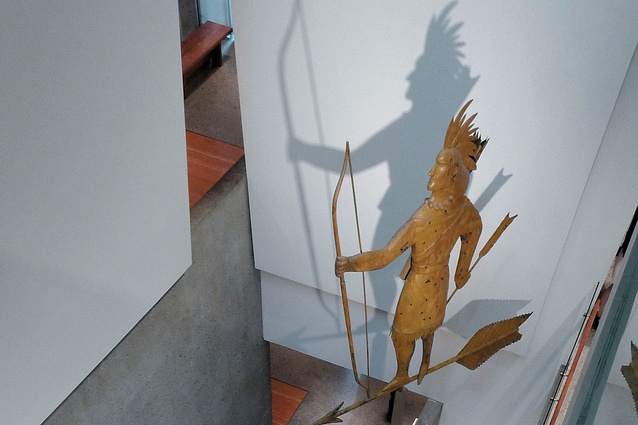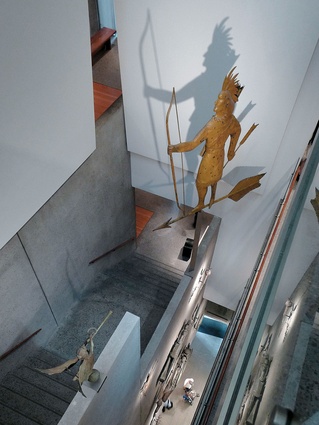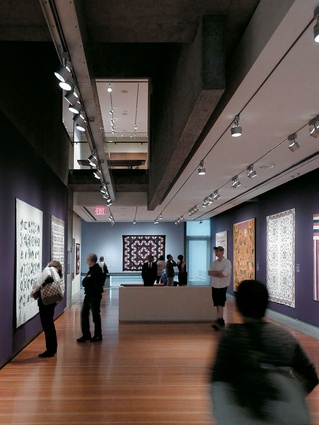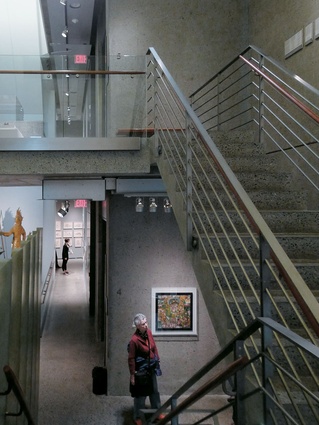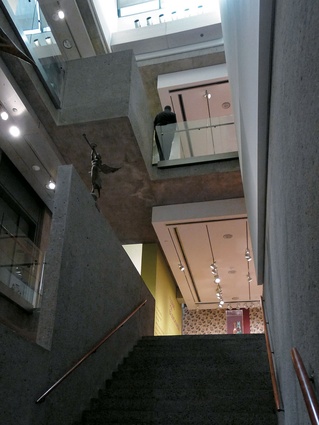Collective craftsmanship
For the September 2012 issue of 'Interior', Sarosh Mulla visited Tod Williams Billie Tsien, the architecture firm behind the American Folk Art Museum, to talk about the vagaries of craft, and its importance to modern architectural practice. The Folk Art museum's longevity is now unfortunately threatened by an impending expansion of the Museum of Modern Art.
It is one of the most slippery concepts in contemporary architectural practice – craftsmanship. In the past one might have said that craft is an analogue endeavour which carries with it a demonstration of consideration and, often,traditional skills, leading towards the creation of something beautiful. This is a much-maligned definition in architecture, often due to the various philosophical definitions of beauty and a fearful stance against ‘folk art’ that originated in the modern movement.
On a recent visit to the New York studio of Tod Williams Billie Tsien Architects, I asked them about the way craftsmanship is a part of their work, beginning with a redefinition of what craftsmanship is.
“We do believe in the person who makes the work: whether the person is a plumber, or the person is a mason, or a sheet-rocker, or actually the organiser of the project. We look to find people who perform at the highest level; for me, they become craftsmen.”
As such, skill is still seen as the definitive trait of the craftsperson, but what is evolving is the way these skilled individuals fit within larger teams, working towards larger goals.
“I would say craftsmanship in architecture is the person who commits themselves to doing the best they can and that means not just working by themselves, but working with others: working with our design and us working with their capabilities.”
The profession as a whole is beginning to drift away from the idea of the ‘starchitect’ and the brand associations of the icon. While complaints about this model of architecture are diverse, many agree that this manner of practising architecture often produces outcomes that say little or nothing about the people and places that they are supposed to embody. While collaboration is key to these large projects, collective craftsmanship is not. Practical tactics are required by the architect to gather together not only a definition of craftsmanship, but also an assemblage of willing personnel to test these new definitions. Inclusive conversation is one such tactic, notes Tod Williams.
“I think when I was younger, I believed that you could draw something and then it can be built – and it certainly can be done that way. But it’s not the way you want to work. It certainly doesn’t honour the craft.”
At the heart of this methodology for architectural fabrication is acknowledgement of the skills and opinions of others. The result of this openness is that problems are found early and mitigated before they become part of the final building. Craftspeople can contribute greatly to the realisation of the design goals of the architect, but this must begin with the architect being willing to share these goals. The executable quality of the project is hinged on the relationships that are formed.
“We really try to meet with virtually all the people who are going to work on the project and let them know that we have aspirations that this project will last both beyond their lifetimes and our lifetimes; and thus we need to be transcendent in our efforts,” says Williams.
Prototypes, or mock-ups, are one way that the architect and the contractor can develop their crafts together. This is a point in the design process where the physicality of an object can add new dimension to the verbal or graphical representation of ideas. As such, it can also be used as a focal point around which all members of the team can gather and ensure that the final product will be cohesive.
“The discourse is crucial particularly in the mock-up. They [the clients] are not only excited by the mock-up, but they can see and critique it as we can.”
The inclusion of the client within this process creates an instant feedback loop where the design can be honed, the construction method improved and the client’s needs better met. Through their work, and particularly in the manner in which they conduct their work, architects like Williams and Tsien are returning to values of communication and collaboration. The result is buildings that speak of their consideration, time and care. Craftsmanship is not the end aim but, instead, a description of the chosen path towards great architecture.
Today we live in an age where cultural memes are more rapidly developed, and replaced, than they were ever before. The traditional definition of craftsmanship, that of the laborious application of hand skills, is ill-equipped to deal with the demands of the architectural practice in a globalised economy. However, it is precisely because of our expeditious consumption of modern culture and accelerated economic cycles that there seems to be a renewed appreciation of those who consider their work a ‘craft’ and as such have gone some way to redefining the meaning of the word. These practitioners are not seeking a nostalgic return to the traditional notion of architects as ‘master craftsmen’, but a much more democratic use of the concept.
Not simply the application of a learned skill to a particular material, craftsmanship, as demonstrated by Tod Williams Billie Tsien Architects, is the application of human aspiration to that material. This is what connects us as people to our places.
Addendum: The former Folk Art Museum is an outstanding piece of American architecture and craftsmanship. It’s fate rests with, ironically, an organisation that has a permanent collection devoted to architecture and design. The tragic irony of this situation does not lessen the outrage that many feel over this plan of action. If a supposedly enlightened organisation like MOMA feels architecture of this quality is disposable, then what faith can be placed in the Museum’s role in the city?

